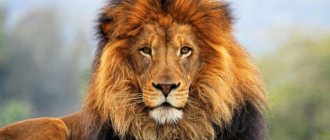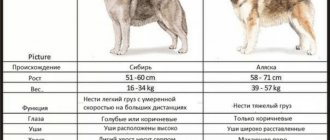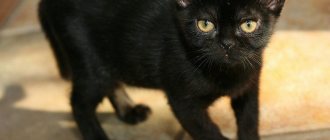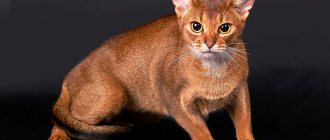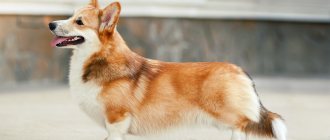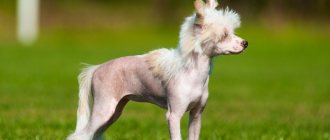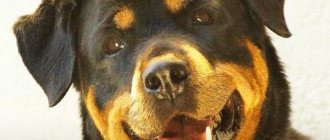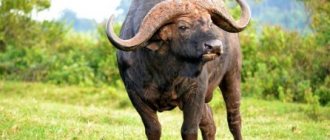It is no secret to all livestock breeders that situations often arise when it is necessary to find out the weight of a cow, bull or calf, without a scale at hand. It is impossible to determine the weight with absolute accuracy without a scale. Nevertheless, obtaining information as close to reality as possible will not be difficult. You can find out the weight of an animal using special tables using simple measurements and calculations. You can also use the average weight of the animal as a guide.
This usually happens in the following cases:
- selection of balanced nutrition for cattle;
- purchasing cattle live weight (or you need to determine the amount of meat).
Why is the weight of cattle measured?
The weight indicator of cows is an important zootechnical trait, thanks to which it is possible:
- determination of average weight gain during the day;
- adjusting the diet and feeding pattern;
- calculation of the quantity of medications used for vaccination and other veterinary purposes;
- selection of individuals suitable for breeding activities.
In addition, the weight of cattle is important for determining the degree of their fatness and the subsequent formation of the market value of animals.
Cattle condition parameters
The determining factors of this parameter are the degree of development of the animal’s muscles and the thickness of the subcutaneous layer of fat, which are detected by palpation and visual inspection. In females, fat deposition begins in the back, followed by an increase towards the head. Body condition assessment is carried out differently in adults and young animals.
Cows and bulls:
- Highest (400-450 kg) . Well-defined body relief, having a rounded shape with a thick muscle layer on the hips. The fat layer is evenly distributed throughout the body.
- Medium (380-449 kg) . Characterized by angular shapes, combined with insufficiently rounded muscles. The highest concentration of fat is concentrated in the tail area.
- Low (less than 380 kg) . Poorly developed muscles are noted, accompanied by angularity, flat hips and protruding shoulder blades. There is no fat.
Young animals
This category includes individuals aged from 3 months to 3 years, regardless of gender:
- Higher . There is a rounded body with developed muscles. There are no protrusions in the spine area. It mainly accumulates in the ischial region.
- Average . Muscular development is satisfactory. A slight angularity with a slightly protruding spine is noticeable. There are few fat deposits.
- Low . Underdeveloped muscles with protruding shoulder blades and spine.
Exit of meat from slaughter
The slaughter yield of meat never corresponds to the weight of live cattle. It is predetermined by the individual characteristics of the breed. A figure of 65% is considered good. In some breeds it is no more than 48%, which is why when slaughtering an animal that has a large mass, less meat is obtained. In calves, whose age is 4-6 months, the slaughter yield of meat is always less than in adults.
Cow cows are slaughtered after their milk production has decreased (8-10 years). The bull is slaughtered 5-6 years after birth. At this age the meat yield is highest.
When to weigh
The weight of cattle is determined 2 times a year: with the onset of spring, when the grazing season opens, and at the end of the autumn period, before the animals are transferred to stalls. As for the time of day, the morning is most suitable for weighing. Young animals at the age of six months need more frequent weighing.
The frequency of determining the body weight of calves that have not yet reached 6 months is as follows:
- after 6 hours after birth - 1 time;
- time of birth - 2 months: three times during one month, waiting at 10-day intervals;
- 2-6 months: once a month.
Subsequently, it is possible to determine how much a cow or bull weighs immediately before the insemination process or for the purpose of classifying animals.
Records
History knows of cases when the weight of an adult cow or bull went beyond generally accepted norms. The record holder for bulls is a representative of the porcelain breed, raised in Switzerland. Its height was 1.9 m, and the live weight of this bull was 1,740 tons. The bull living in England has slightly smaller dimensions. With a similar height, its carcass is only 40 kg less. Third place went to a bull of the Fresian variety. It weighs 1.3 tons. In fourth place is its relative, which is only 100 kg less. Its body length is 430 cm, which is also a record.
Burenki also have record holders. A representative of the Holstein-Durchman variety was included in the Red Book. Her height is only 2 cm less than the height of the record-breaking bulls, and is 18 cm. Her weight is 530 kg more and is 2,270 tons. Her chest girth is 4 m. It is difficult to imagine that another cow will ever appear that will surpass These indicators are both in kilograms and meters. To date, not a single cow has come close to this record.
What does the weight of cattle depend on?
The weight of a bull, cow and young animals is most directly influenced by:
Conditions of detention
In order for animals to feel comfortable and gain weight well, when arranging a barn it is important to pay attention to the following parameters:
- the temperature should not be below 10 degrees Celsius in the room where adults are kept, and less than 15 degrees for young animals;
- degree of illumination;
- gas level;
- absence of noise;
- calm environment.
You should also take care of the arrangement of the pasture, which should be kept clean.
Feeding the animals
Nutrition for cattle must be of high quality products. Often the diet includes food:
- of plant origin in the form of grass, root crops;
- coarse, represented mainly by hay and straw;
- concentrated, consisting of grain crops and technical waste.
Vitamin and mineral supplements are a must.
Influence of other factors on body weight gain
In addition to belonging to a certain direction of productivity and breed, the weight of a cow depends on other factors:
- health conditions;
- conditions of detention and feeding;
- age and gender.
Living conditions and food
Young animals grow quickly and develop properly when kept in comfortable conditions. In winter, the barn should be warm and dry, then the animals will not waste energy heating their bodies. The accumulation of musty air in the room, oversaturated with hydrogen sulfide and ammonia vapors, should not be allowed. In such conditions, cows get sick more often, which means their average daily weight gain will be minimal.
Proper preparation of cattle diet is the farmer’s primary task. Young animals should receive not only hay, but also the norm of succulent feed and concentrates. Vitamin and mineral supplements are also included in the daily diet of calves.
Stressful situations
Cattle do not cope well with stressful situations, such as long transportation. Farmers are advised to avoid transporting cows long distances shortly before slaughter as they quickly lose weight.
Attention! Being under stress for a long time, an animal can lose up to 20% of its weight.
Long-term exposure to negative factors causes a deterioration in the animal’s general condition and leads to fluid loss. As a result, not only the slaughter yield decreases, but also the quality of the meat - it becomes tough.
Age
From birth to 6 months, calves grow very quickly. At one year of age, the heifer’s weight is 85-90% of the weight of an adult. Only by the age of 2 years does this figure reach its maximum, provided that the animals are properly fed. It also matters how strong the individual’s immunity is. If a bull or heifer suffers an infectious disease, this factor will certainly lead to a slowdown in muscle growth.
Average weight of cow and bull
Determining the average weight of a cow and a bull poses certain difficulties. However, there are some features that are characteristic of all animals of the species in question.
The first one assumes the dependence of body weight on the direction of productivity to which the individual belongs:
- Meat . Such animals have developed muscles, which directly affects their weight. The average indicators of cows vary between 400-700 kg. At the same time, the average weight of a bull significantly exceeds this figure for females, being in the region of 800-1500 kg.
- Dairy . Representatives of this trend are distinguished by much lower body weight. So, bulls weigh 700-1100 kg, cows - 400-600 kg.
The second feature is the superiority in weight of bulls over females. As mentioned above, the body weight of cattle is largely determined by housing conditions, feeding, age parameters and the environment. In accordance with these factors, animals are divided into weight categories:
- Selective . Includes cows whose body weight exceeds 450-500 kg.
- First grade . Consists of individuals whose weight does not exceed 450 kg and does not fall below 400 kg.
- Second class . This includes representatives of cattle with weight parameters in the range of 380-400 kg.
- Third class . Includes breeds whose weight is below 380 kg.
Interesting information about cows in numbers
When stressed, the hormone cortisol begins to be actively released in the tissues of cows, which causes muscle mass and fat cells to break down.
This is necessary to produce glucose, which helps cope with stress. As a result, the cow’s body begins to actively burn sodium and potassium ions from the muscles to synthesize glucose.
This leads to the fact that the beef becomes tough, and this negatively affects the taste and marketability of the meat. This stress is caused by a lack of water and food, which is typical during long transportation to the slaughterhouse.
A cow weighing 500 kg produces about 10 tons of manure per year, which means that a herd of 100 cows per year will produce a thousand tons of manure. It is worth noting that cow dung is beneficial. For example, if manure was removed from all the cows living in the United States, millions of homes would be supplied with electricity. This amount of manure can produce 100 billion kW per year.
How to find out the weight of cattle without scales
You don't need a scale to determine how much a bull or cow weighs. This can be done in various ways and through the use of various techniques:
According to Klüver-Strauch
It is important to take measurements with maximum accuracy. This requires a tape, the measurement scale of which is calculated in centimeters. If it is missing, it can be replaced with a tape measure or twine. The essence of the measurements is as follows:
- the measuring device completely covers the animal’s chest in the peri-scapular region, after which the results are recorded;
- Next, the length of the body is determined along the oblique, which is made up of the articulation of the humeroscapular zone and the base of the tail.
The results obtained are subsequently checked against the corresponding table. It is important to consider that the weight of adults and young animals is checked according to different tables. At the same time, the body weight of animals that have not yet reached the age of one year does not apply to young animals.
According to Freuven
The presented method is used to determine the weight of “pre-year-old” cubs. The result is achieved by measuring the length of the body in the diagonal direction and the volume of the chest in the scapular region. The method does not guarantee high accuracy, but is quite suitable for identifying the approximate weight parameters of newborn calves.
According to Trukhanovsky
This method involves determining the weight in accordance with a computational formula. It is first necessary to measure the length of the animal's body in a straight line, after which - the girth of the chest. The resulting numbers are multiplied among themselves, and their total is divided by 100. In order to obtain the most accurate results, the degree of fatness of the cattle is taken into account:
- with high and medium levels of fatness, the total increases by an average of 7%;
- with fatness below average, the result is reduced by 7%.
By belly size
Measuring weight using the mentioned method is more suitable for young individuals. The chest circumference is measured using the largest part of it, after which the result is checked against the table values. Moreover, each breed of cow has its own tables.
Using a special measuring tape
It is a tape on which, next to the length designation, there is an approximate weight corresponding to it. Before measuring chest girth, it is important that the animal holds its head level and maintains a calm, static state. During the measurement process, the tape should fit tightly to the body.
Regressive calculation method
In this case, it is important to know the size of the chest circumference, and then use one of the following formulas:
- Y1 = (5.3 * X) – 507 if X varies between 170-180 cm;
- Y2 = (5.3 * X) – 486, with an X value from 181 to 191 cm;
- Y3 = (5.3 * X) – 465, with X equal to 192 cm or greater.
HOW TO DETERMINE THE WEIGHT OF A CALF
For proper care of young animals, it is important to regularly monitor how much each calf weighs. Lack of weight may indicate an animal illness. If weight gain is too low for all young animals, the cause may be a lack of important microelements in the diet, poor management or stress.
The average weight of newborn calves is 40 kg (7–9% of the mother’s weight). Since they grow quickly, it is recommended to take measurements every 10-14 days. At one month, each calf should weigh on average twice as much as at birth. Again, this indicator largely depends on the early maturity of the breed.
Calculating the weight of bulls
One of the main differences between bulls and cows is weight. Males are significantly superior to females in this indicator. As animals grow older, the difference only increases. Many novice farmers do not know how to determine the weight of a bull. To do this, it is important to take into account the breed of the male.
Breed characteristics
All cattle are divided into broad groups in accordance with the direction of their productivity:
- Meat . They are distinguished by rapid weight gain, with an average gain of one kg per day. It is not surprising that by 15 months, some males already weigh more than 500 kg. A newborn beef calf weighs about 40 kg.
- Dairy _ Representatives of this group are distinguished by a slow and uniform process of weight gain. A newly born calf weighs on average 20 kg. During the day, weight gain is about 600 grams.
- Meat and dairy . Also characterized by gradual weight gain.
Thus, the noticeable influence of breed on cattle is most clearly manifested at birth and in the young period.
Determining weight by measurement
When determining the weight of animals, you need to remember that it does not always change smoothly with age. With the development of cattle, it is possible not only to gain it, but also to temporarily lose it due to unfavorable factors.
Using tables to control the weight of animals allows you to save on regular weighing, but is not an absolutely accurate method. The average deviation in determining weight in some cases can reach 30-40 kg.
Weight gain depends not only on the animal’s diet, but also on other factors: care conditions, climatic factors, animal health.
Weight tape
To determine the net weight of cattle, according to the table above, the correctness of measurements is important:
The use of tape is convenient, in particular, because it eliminates additional stress on animals, and it saves labor costs when carrying out control.
Measuring tapes are made on a synthetic basis. Various options are available: for beef and dairy cattle, for various breeds.
Weight tables for outstanding breeds
Among cattle, there are breeds of cows whose parameters differ significantly from standard indicators. The most famous is the black-and-white breed, for which a special table has been developed that allows you to determine the body weight of animals based on the results of measuring the belly and chest. During the measurement process, the calm state of the individual is important, which sometimes becomes impossible. In such cases, a small discrepancy of 50 kg up or down is acceptable.
Below is a table for determining the weight of black-and-white breeds of cows and bulls
Table for determining the weight of black-and-white breeds of cows and bulls
Video of measuring the weight of cows and calves using a regular measuring tape
You can clearly see the weight measurement of cattle in the following video:
How much do cows of different ages weigh?
Newborns weigh from 40 to 50 kilograms. In most cases, the severity of the calf directly depends on the genetics of the cow. This figure is 10% of the total mass of the calving female. For breeding activities it is worth taking large individuals. The calf gains at least 3 kg in weight per week. A good gain is a weekly gain of 7-8 kg. Gender at this age does not have a fundamental effect on the level of productivity. At the age of 6-7 months, the calf weighs 150-200 kg. When an individual reaches a year, weight gain is half of the maximum that is predetermined by nature. Accordingly, after a year this figure doubles.
Error in weightless determination of mass and rules for taking measurements
Measuring the weight of an adult cow, bull or calf using the measurement method is not entirely accurate. Tabular identification of body weight, as well as calculations using formulas, assume an error of 20-30 kg. Sometimes this indicator shows even lower values, which is far from critical.
Measurements are often used to monitor the development of animals. In order to achieve the most accurate results, it is important to learn how to take measurements correctly, which can sometimes be difficult, since some breeds of cows are characterized by their violent temperament and restless character. The measurement process becomes more complicated with age, when the animal acquires increasingly larger dimensions. The weight of adults and young animals can be determined by two values: chest girth and body length, measured in the diagonal direction. To accurately measure the sternum, the measuring tape must be passed exactly over the shoulder blades. The oblique length is revealed from the highest protrusion of the scapula to the extreme ischial protrusion.
Equally important is the speed of measurements, which is necessary for all methods of measuring live weight of cattle.
Cattle measurement table
A table is shown on how to find out the weight of a bull without scales. It indicates how to determine the weight itself by measuring the oblique length of the torso and the circular girth.
The cattle weight table is applied as follows. Depending on the oblique length of the body, a column is selected, the row is determined by the size of the girth.
Let's give an example of calculating live weight using the cattle table. Suppose the length is 165 cm and the girth is 195 cm. Having found the column and row in the indicated way, you can determine from the corresponding cell that the weight is 549 kilograms.
To determine the weight of a calf, another table is used. It is used in the same way as the previous one: based on the oblique length and the size of the chest girth, the necessary column and row are found where the weight is indicated.
Table for determining the live weight of a calf
What to look for when measuring
In the process of determining the weight parameters of cattle, there is a high probability of errors, which is possible due to:
- measurement inaccuracies;
- rounded calculations;
- individual structural features of the animal body.
You should also take into account the possibility of weight fluctuations during the day, which may occur due to the peculiarities of keeping animals or climate conditions. Error rates may vary between 5-7%.
How does the weight of cattle vary depending on the breed?
There are several tens of thousands of different breeds of cows in the world. All of them are divided into 3 large groups in accordance with their productive focus:
Dairy
Individuals of this breed have a high level of milk production, when milk is characterized by increased fat content, and meat by reduced nutritional qualities. Some of the brightest representatives of this breed are:
- Red Stepnaya, the weight of which for cows can reach 400-500 kg, and for bulls - 900 kg;
- Black-and-white with a body weight of at least half a ton in females, and about 800 kg in males;
- Holstein, which has serious dimensions with a weight of more than 650 kg and the ability to gain weight up to one and a half tons.
Meat
The distinctive features of beef cattle breeds include:
- rapid increase in weight parameters;
- high quality meat, which is achieved through the special development of muscle tissue;
- exquisite meat taste.
The most famous beef breeds of cows are:
- Hereford, the body weight of which in adult females can reach up to 500-600 kg, and in bulls - up to 1100 kg. The percentage of live meat is about 65%;
- Aberdeen Angus, producing just over 60% of meat production;
- Charolais. An adult male can reach a weight of 1200 kg, and a female - all 800. At the same time, there is a much larger amount of meat and a deficiency of fat, which directly affects the meat yield: 70% of the entire carcass;
- Ukrainian meat, characterized by unpretentiousness in nutrition. Despite the fact that representatives of this breed prefer food of plant origin, by 16 months their weight can reach a full 550 kg. In addition, the presented color of cows is beneficial in every sense, since its skin is widely used in the shoe industry;
- Znamenovskaya. It has small forms, but is capable of producing about 65% meat. Heifers reach 550 kg, and bulls - 700 kg. Leather and skins are also actively used in the production of footwear.
Meat and dairy
Almost all representatives of the mentioned breed are characterized by a strong physique. They are equally well suited for producing high quality milk and meat. They produce much more milk than meat breeds, and are superior to dairy breeds in meat productivity. According to gender, body weight varies between 550-900 kg. The most prominent representatives of this breed are:
- Alatau;
- Brown Carpathian;
- Lebedinskaya.
What are the differences between cow breeds?
It is also worth mentioning the influence of the animal’s breed on its weight. Farmers have adopted the division of all cattle breeds into three main categories:
- meat;
- dairy,
- dairy and meat.
Burenki from different categories are more than noticeably different from each other. This is expressed mainly in the following.
Individuals belonging to the dairy category are characterized by such indicators as a large quantity and, of course, excellent quality of the resulting product. The focus of such cows is the highest possible milk yield and the best quality of milk.
Representatives of meat breeds are characterized by excellent quality and quantity of meat products. In addition, you can also get milk from them, but its quality will be somewhat worse.
Milk from dairy cows mainly differs from milk obtained from representatives of the other two categories in its nutritional value, higher fat content, and higher dry matter content.
The weight of cattle oriented towards dairy products differs significantly from the weight of those animals that are bred to produce meat products - beef. This is due to the fact that the latter have a much larger volume of meat, or, in other words, muscle mass - actually , this is exactly what they were bred for.
Representatives of the dairy and meat category belong to the so-called mixed breeds. They have average indicators in all respects - both in terms of mass and productivity. If individuals of the meat and dairy categories have a certain focus on specific products, then cows of dairy and meat breeds are equally focused on both meat and milk.
Record-breaking cows: maximum and minimum weight
Among the cattle there are also record holders for weight. We should talk about them separately:
The largest breeds
Among the bulls are:
- Porcelain . The most famous male of this color is the bull Donnetto, whose weight was 1750 kg. At the same time, the height at the withers reached almost 2 meters. Became famous in the 20th century in Switzerland.
- Charolais . A male named Field Marshal with a body weight of 1700 kg and a height of 190 cm. He is still alive to this day. Lives in the United Kingdom.
- Fresian . A Chili bull with a recorded weight of 1300 kg. Also lives in the UK. This also includes the male Trigger with a weight of 1200 kg and a height of 196 cm. The body length is 4.5 meters.
- Podolskaya . Here it is worth noting the Repp bull, which was able to reach a body weight of one and a half tons. Lives in Ukraine.
Among the cows it is necessary to note:
- Holstein - Durchman hybrid . A cow named Mount Katahdin at the beginning of the 20th century had a recorded weight of 2270 kg with a height of 188 cm and a body length of 4 meters. Got into the book of record holders.
- Chile . All representatives of this breed have a body weight slightly exceeding a ton, and their height reaches 183 cm.
- Kazakh white-headed . The weight of just over a ton was recorded in 1980.
The smallest breeds
This should include:
- Namibian ovambo weighs only 160 kg for cows and 225 kg for males.
- Anatolian, the live weight of which can be only 95 kg with a height of one meter.
- African shorthorns. Average weights reach 150 kg, and height may not reach 100 cm.
However, the smallest breed in history was developed in Mexico. Her height was only 62 cm.
Weight categories
The average live weight is in the range from 300 to 450 kg, but this is for heifers - for bulls it is slightly higher and amounts to 600–850 kg.
Raising beef cows is aimed exclusively at producing meat, so such breeds quickly gain height and weight, but meat productivity can be assessed based on which category the cow belongs to. Today there are four of them:
Representatives of the selected category reach half a ton, the first weighs 0.45 tons, the second - 0.38 tons, and the third - 0.3 tons. It is worth saying that only cows are divided into these classes, no bulls.
Cows' weight levels will vary depending on the stage of lactation. At one year of age, the heifer should weigh 200 kg, she is already ready for mating, but it is too early to start her, since the body is not ready, and the cow may die along with the offspring. The first calving occurs when the cattle reaches 70% of its possible weight. An adult begins to weigh about 400 kg only by the age of 5.
A bull calf a month after birth should weigh 50 kg or more, within a year its weight will increase to 400 kg. Only uncastrated bull calves can be fattened at an accelerated pace on fortified feed, and they demonstrate the maximum increase in muscle mass. Already at 20 months, the animal can be sent for slaughter, at which time the muscle frame is almost formed. Breeding bulls usually weigh 900 kg, and during the mating period its weight loses about 50 kg.
The largest bull can gain up to 1200 kg.
